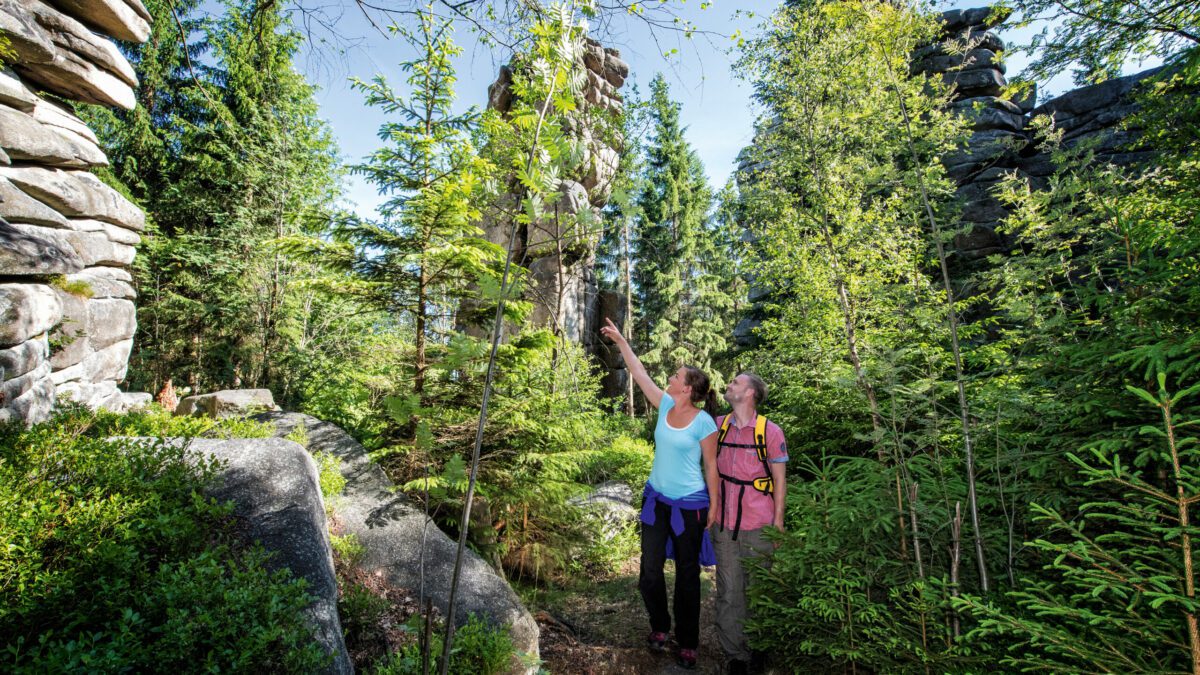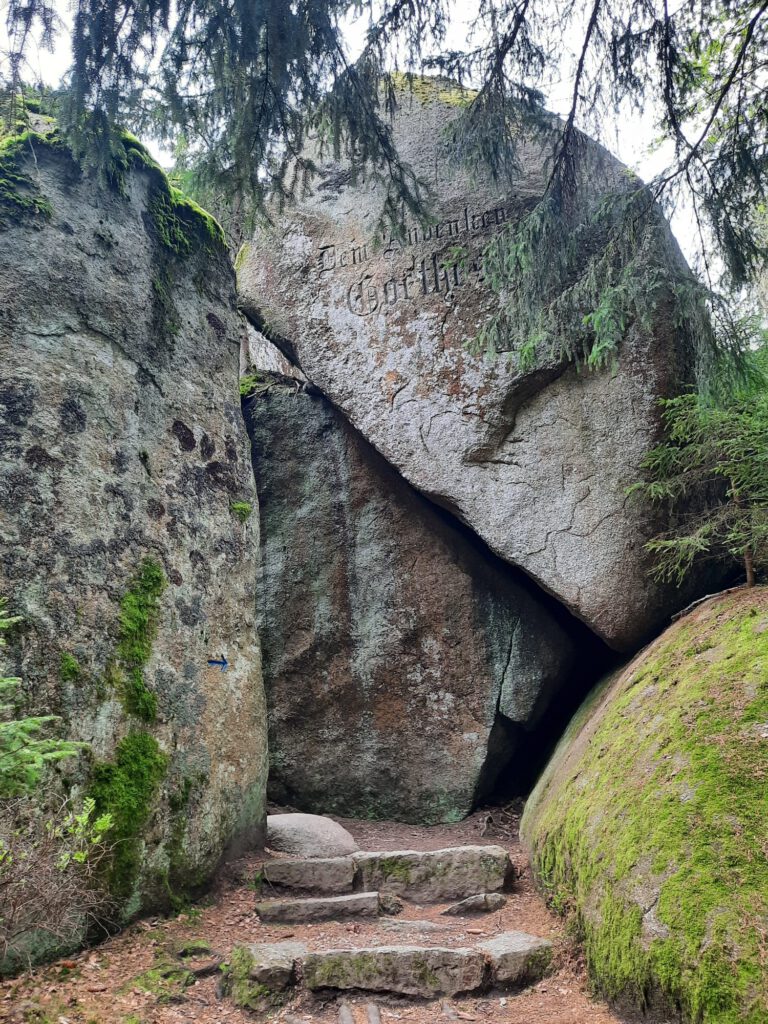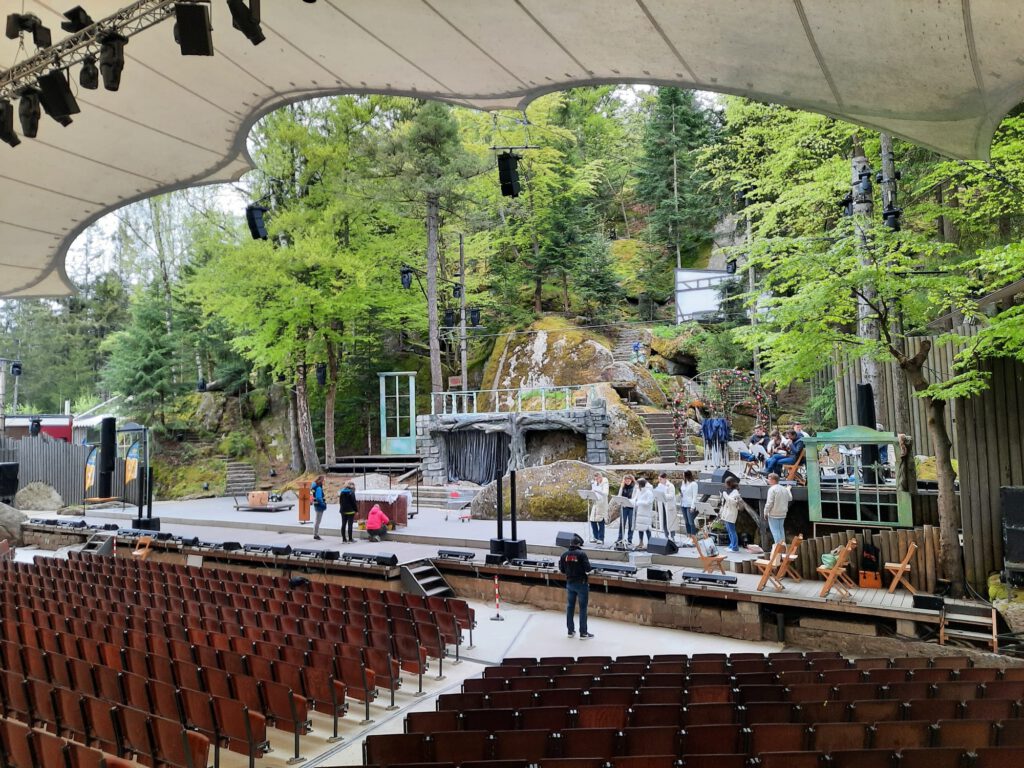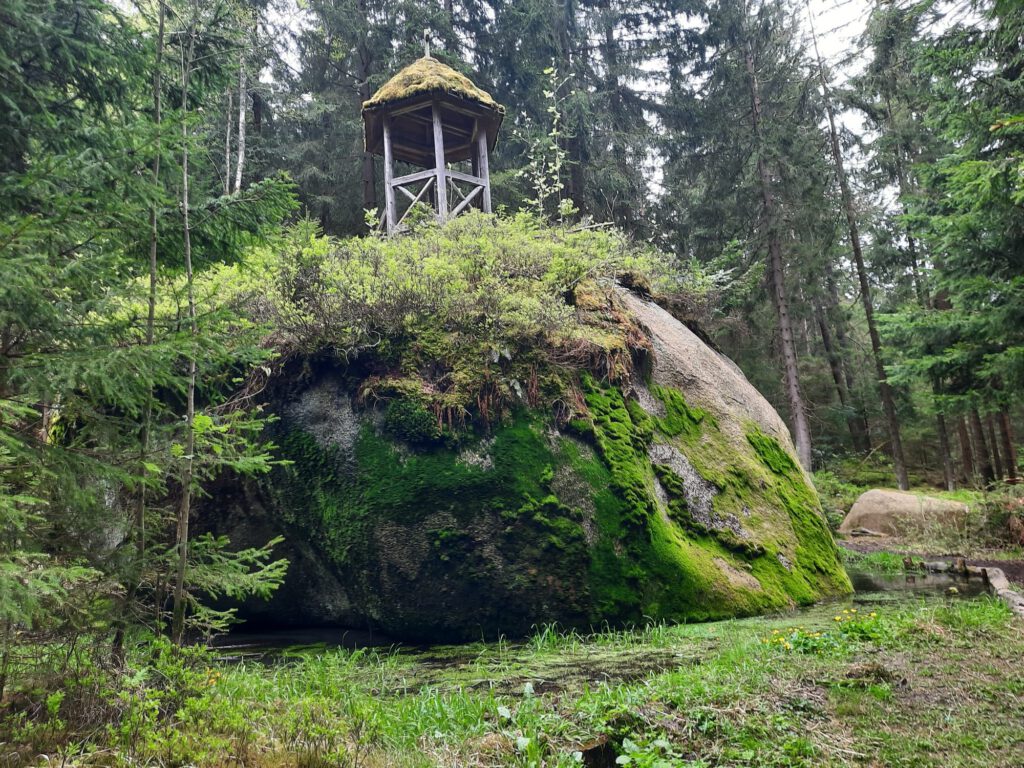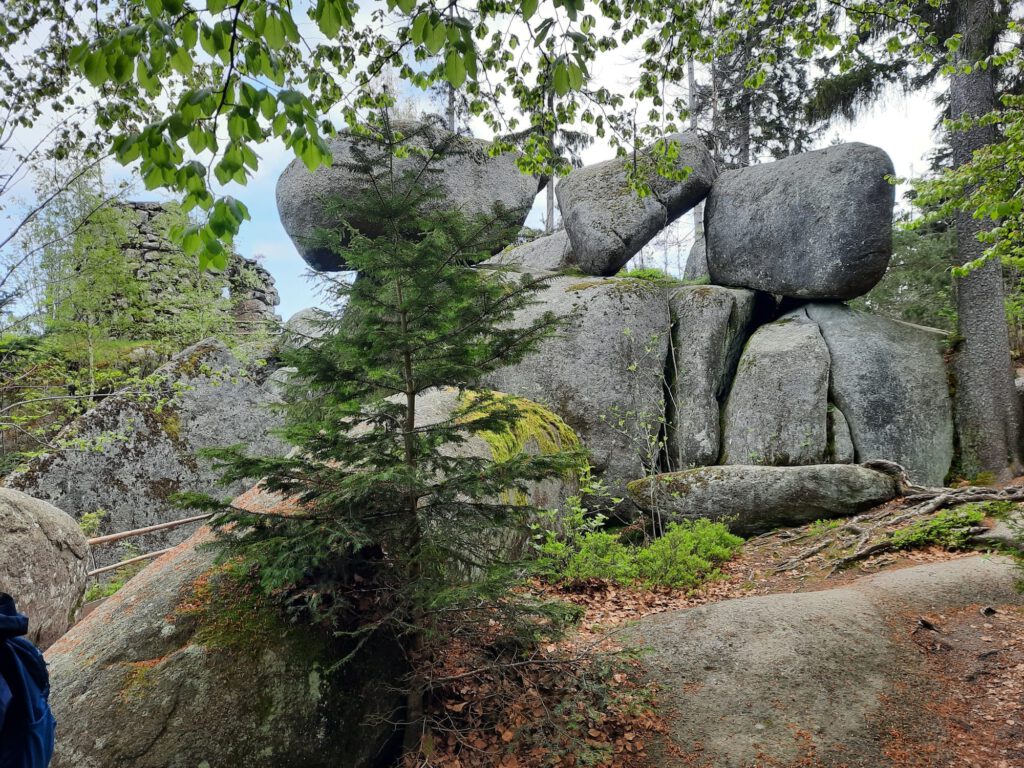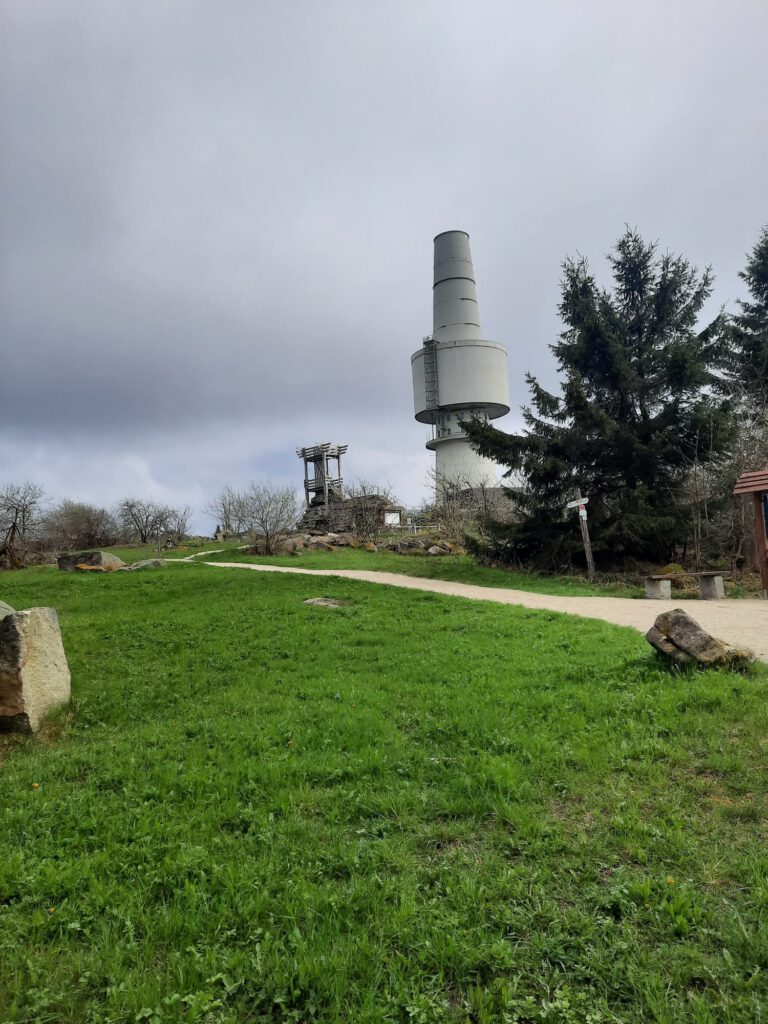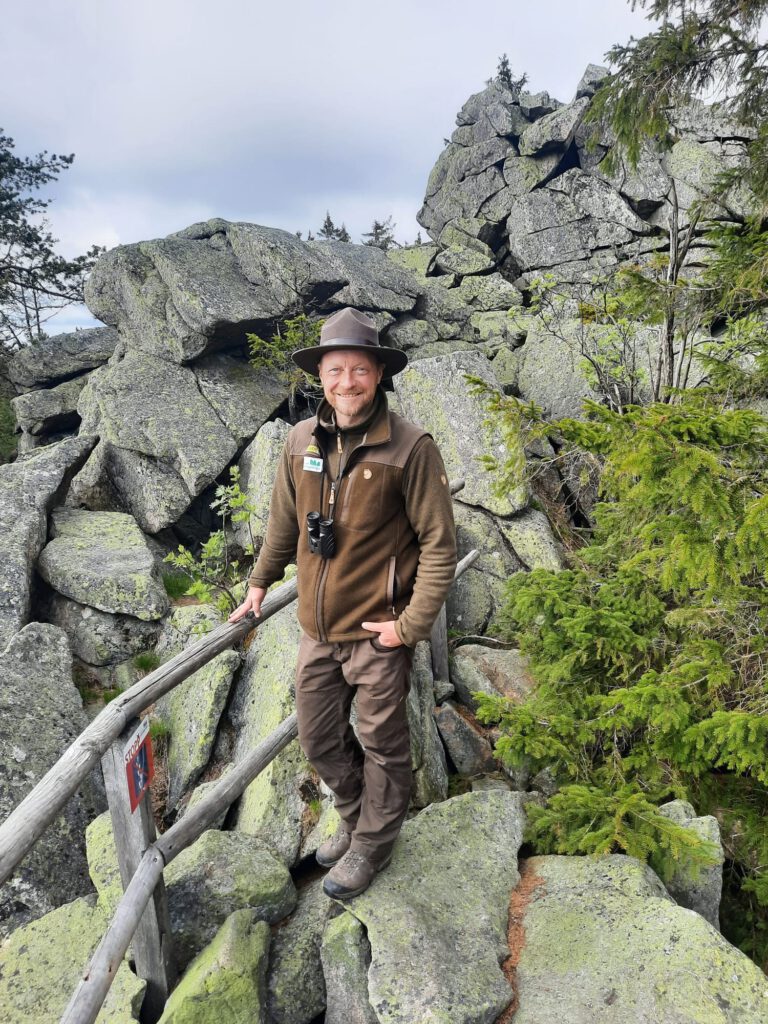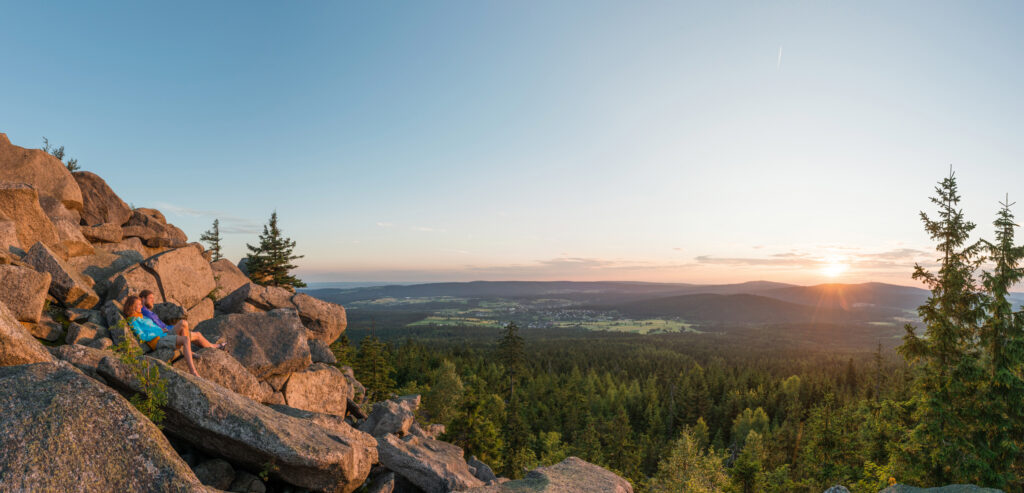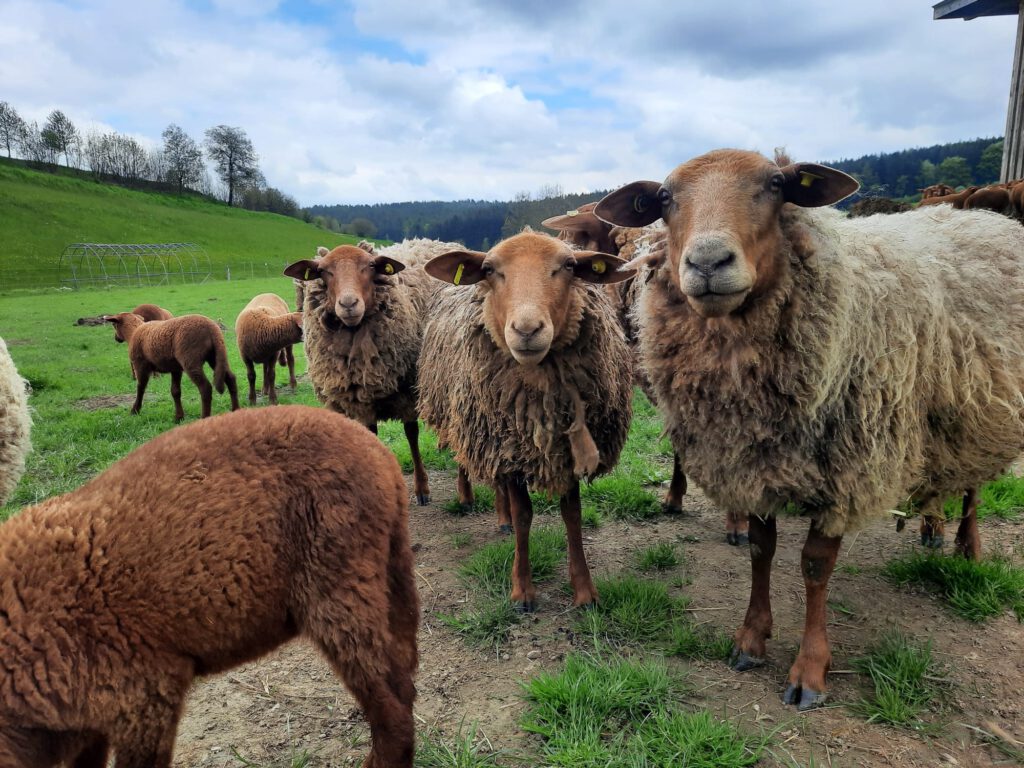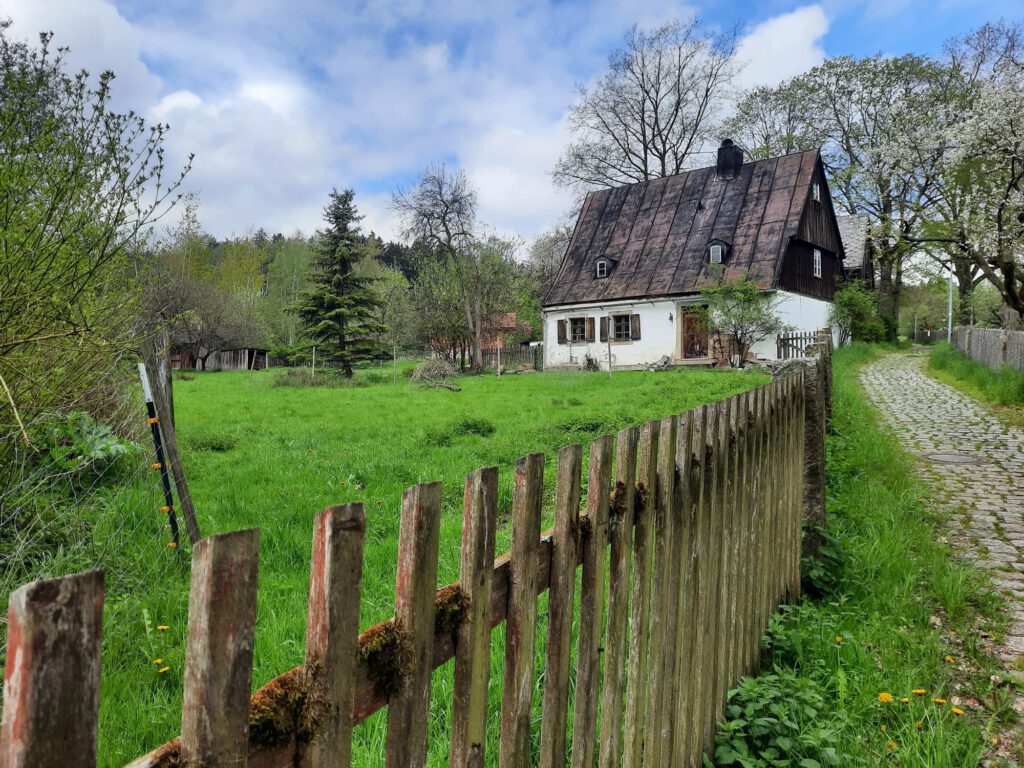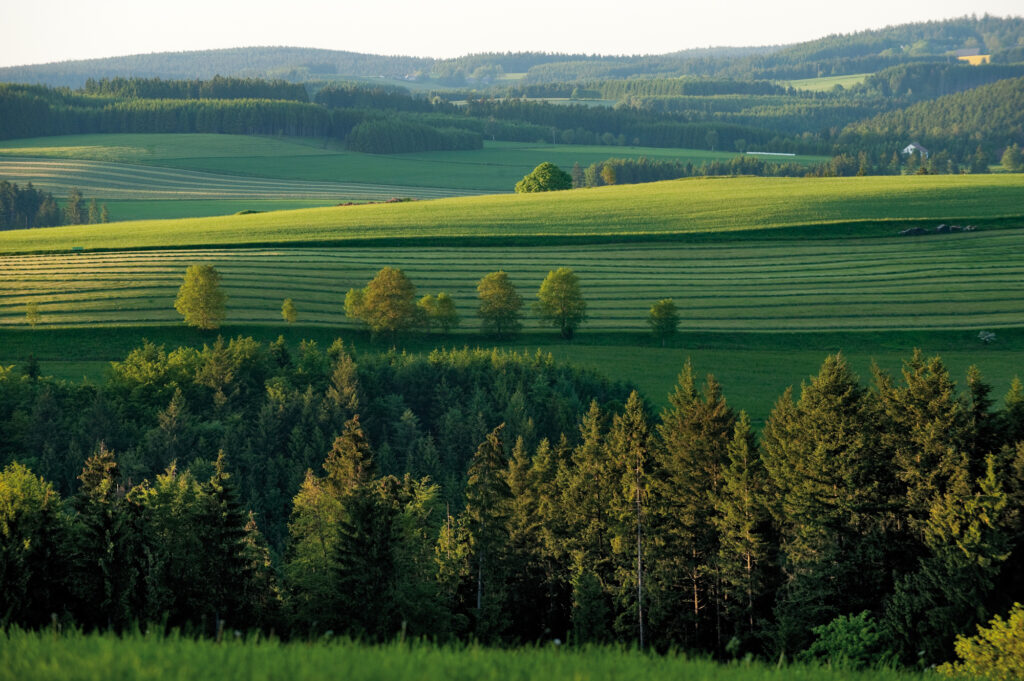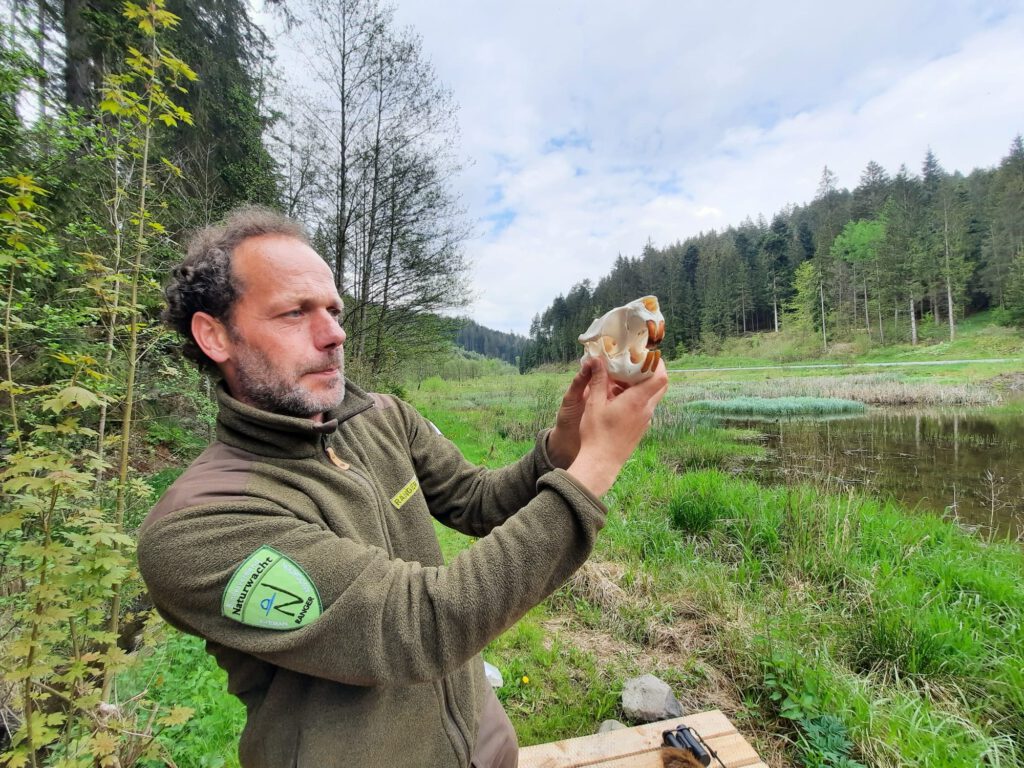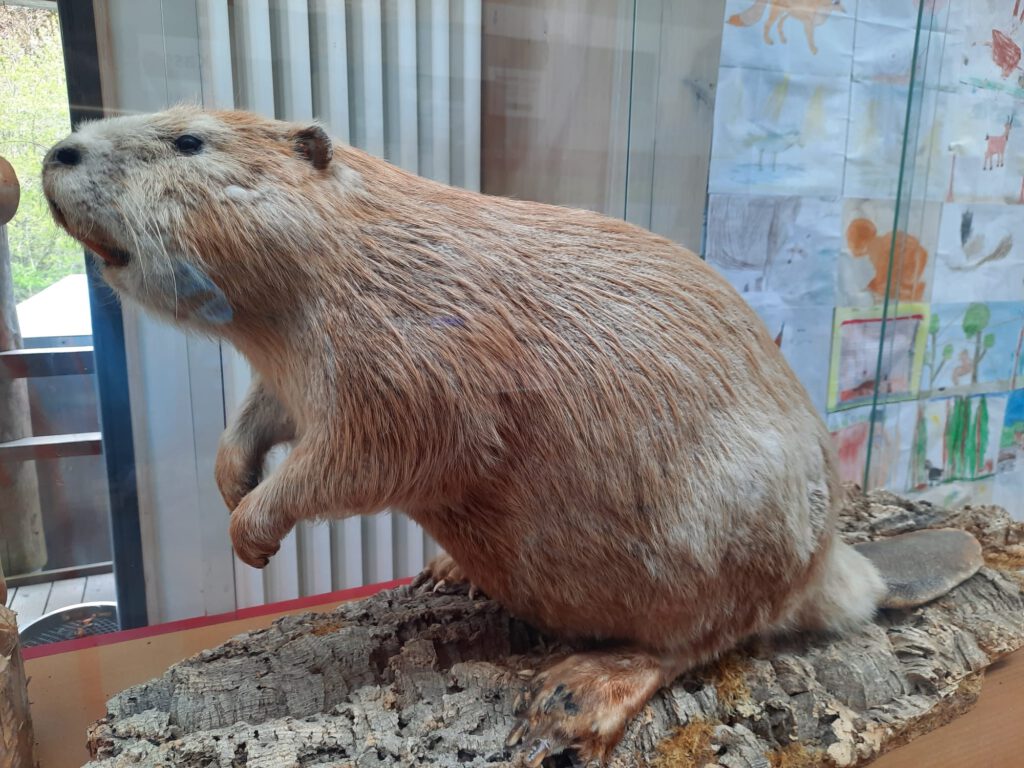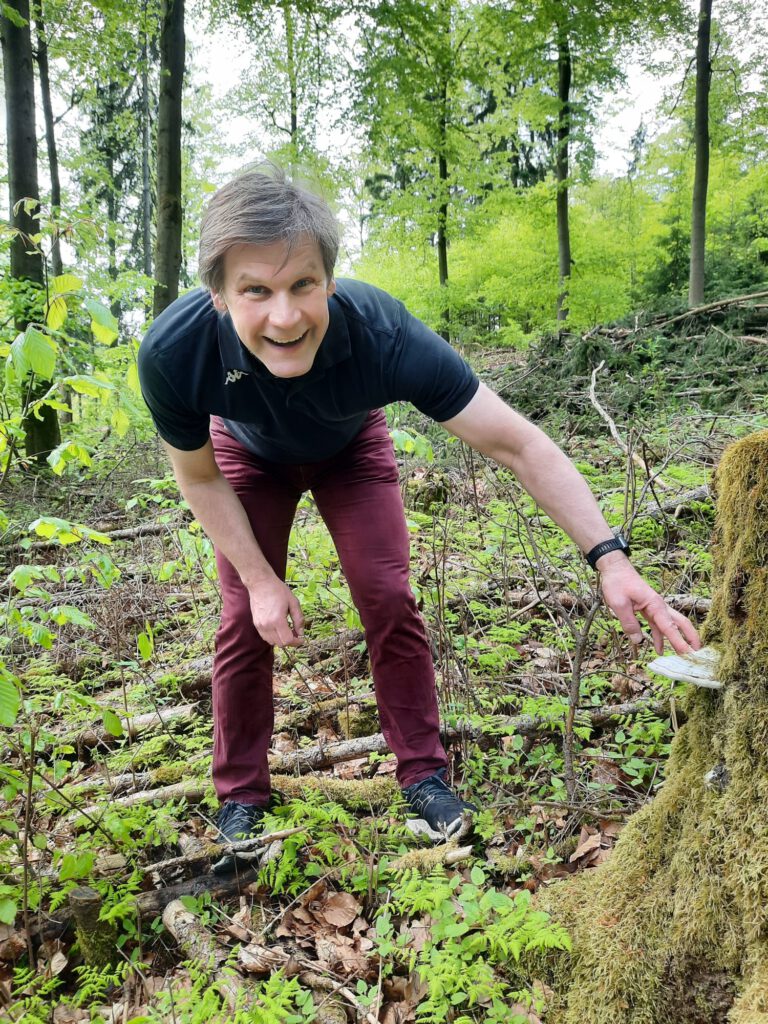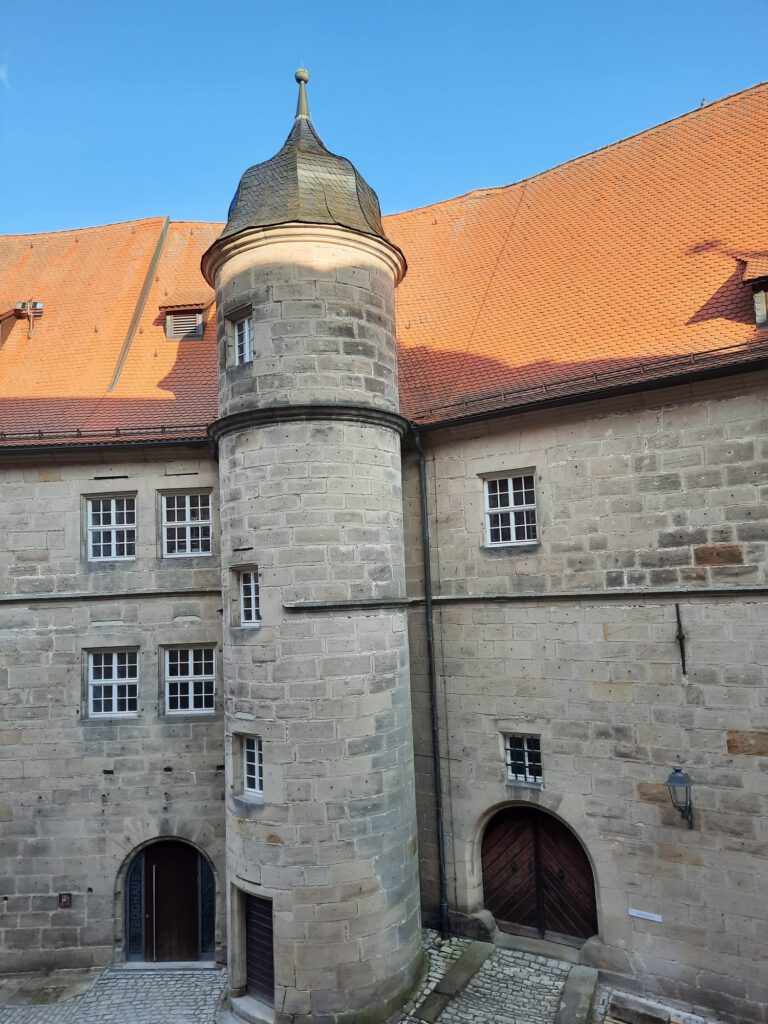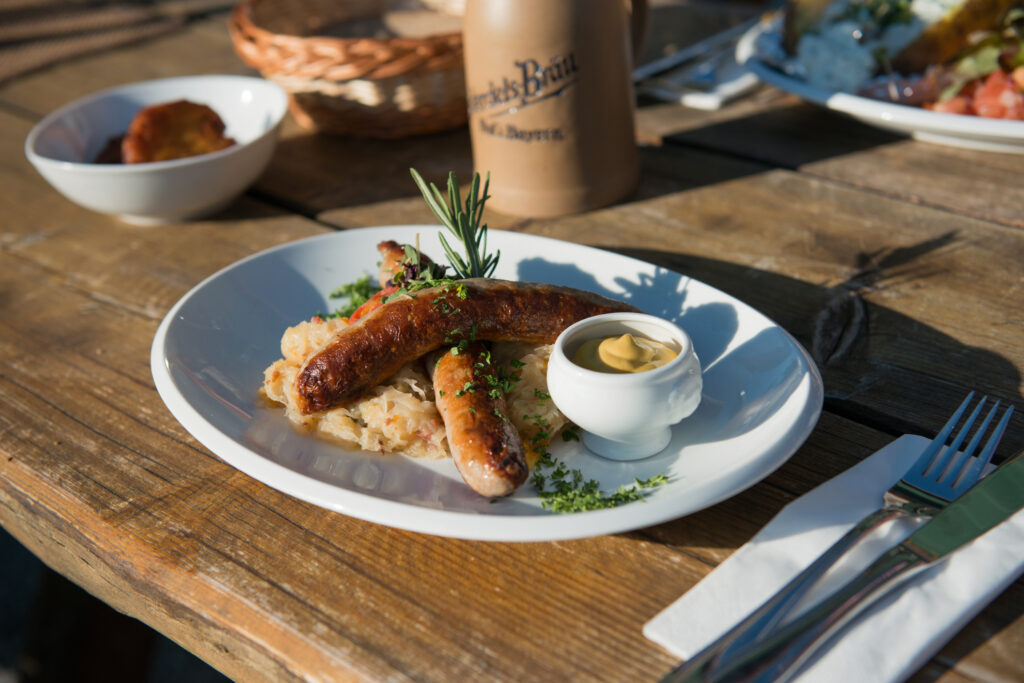
A Royal Art Weekend in London
28. April 2023Franconian Forest and Fichtelgebirge – a romantic insider tip
Tasty beer, fine porcelain, Richard Wagner's operas and Germany's most popular TV presenter Thomas Gottschalk are the best-known export hits from Bavaria's northeastern region. But Franconia has even more to offer. There are the magical, culturally and historically exciting cities of Bamberg, Bayreuth and Coburg as well as a green, fairytale-like landscape of the Franconian Forest and the wildly romantic Fichtel Mountains, which the German romantics like E.T.A. Hoffmann, Friedrich Rückert and Jean Paul inspired emotional poetry from the end of the 18th century.
That was ages ago, more than 200 years. But since the Corona pandemic, the values of the German Romantics seem to be in tune with the zeitgeist again. Who doesn't long for a perfect world and look for the peace and quiet they've missed in the countryside? Camping and individual experiences in nature are booming. In the “motherland” of German romanticism, guests can relax wonderfully with idyllic natural moments and unwind in sunny spruce and beech forests. Listening to the hum of insects, the chirping of birds and the murmuring of the streams - wonderfully relaxing, peaceful and romantic. A discovery of green summer happiness in the Franconian Forest and Fichtelgebirge!
In the sea of granite to Heligoland in the Fichtelgebirge
Rocks as far as the eye can see: round, oval or with strange bulges. Piled up or nested with narrow crevices, caves and grottos. Often green with moss and shaded by trees. The Luisenburg rock labyrinth with the open-air stage of the same name in Wunsiedel near the Czech border is a wildly romantic place with an exciting cultural history that should not be missed. The rock labyrinth was founded in 1790 as a civic landscape garden and was designed in the following years with paths, ladders, stairs and viewing areas. 100 years later, the theater stage was added, which this year is showing, among other things, “Beauty and the Beast” and the controversial musical “Cold Freedom – a Spy Between the Borders”.
The rock labyrinth is like a stone maze. It is often only at second glance that you can tell where the path leads and it is not uncommon for you to wind your way through narrow gaps or climb lattice stairs to enjoy the view from the “Napoleon’s Hut” like Queen Luise of Prussia once did. The rock labyrinth's namesake certainly didn't have any kind thoughts for the French emperor when she looked over the bicorn-shaped rock. On the contrary. A clever monument in the rock labyrinth commemorates the general who overran large parts of Europe from the end of the 18th century, initiated among others by Hamburg merchants who secretly bypassed Napoleon's hated continental barrier. So walk along the sugar smugglers' route in the Luisenburg rock labyrinth through the sea of granite to Heligoland - a wonderful hike like a journey back in time to German romanticism.
Tip: Book one of the excellent guided tours with Christine Roth.
www.wunsiedel.de/tourismus/felsenlabyrinth-luisenburg/
- The tour through the rock labyrinth starts at the old theater square
- The Goethe Rock: Germany’s famous poet was also here
- Romantic pavilion in the forest
- With a view of nature, you can enjoy the performances on the theater stage in the Luisenburg rock labyrinth
- Helgoland im Felsenlabyrinth erinnert daran, dass die Insel in der Nordsee im frühen 19. Jahrhundert ein Schmuggler-Paradies war
- Bizarre granite giants in the rock labyrinth
About Zorro and listening towers on the Schneeberg
Just a short drive further towards Bischofsgrün and you will immerse yourself in the landscape typical of the Fichtelgebirge. Bizarre rock towers and huge heaps of rocks that seem to have fallen from the sky are part of the wooded, hilly natural backdrop, which is also home to lynxes and wolves. The gently rounded, 1000 meter high mountains Schneeberg and Ochsenkopf are the kings of the peaks and offer completely different experiences. The latter is known as the region's popular adventure mountain. Hikers, mountain bikers and, in winter, skiers take the cable car up to the Ochsenkopf, while on the Schneeberg an old telecommunications or, colloquially, listening tower of the Bundeswehr towers into the sky as a relic of the Cold War. For many decades, the Schneeberg with a view of the former GDR was a restricted military area. Today it is considered a symbol of peace and is nice for hiking, for example along the rocky path to the Seehaus inn in the valley. Don’t be alarmed if “Zorro” suddenly peeks out of the bushes. Then it's the rare garden dormouse with the striking facial markings that feels at home here.
Anyone who is amazed by the gigantic boulders and wants to know more about the Fichtelgebirge, which is pleasantly cool even in summer, can take a tour with a ranger from the Fichtelgebirge Nature Park, such as Ronnie Ledermüller. He then explains exactly what was going on in the Fichtelgebirge during the last ice age 500 million years ago.
www.fichtelgebirge.bayern
- The old Bundeswehr telecommunications tower on the Schneeberg
- Nature park ranger Ronnie Ledermüller knows the Fichtelgebirge like the back of his hand
- Stone block sea romance on the Kösseine in the Fichtelgebirge
Two excursion tips nearby:
The spacious Waldhaus Mehlmeisel wildlife park is a great destination for families with children and animal lovers. Numerous native animals live here in large enclosures and walk-in aviaries, such as forest birds, lynxes, a herd of wild boars, raccoons and, according to the zoo, the only white deer and roe deer in Germany. Tip: During the guided tour with a feeding session you can experience the animals up close.
www.waldhaus-mehlmeisel.de
A walk through Bavaria's first Arche village of Kleinwendern near Bad Alexandersbad is a beautiful, interesting pleasure. In 2012, the Fichtelgebirge Nature Park started a rescue operation here and saved the “Sechsämterrotvieh”, one of the oldest cattle ranges in Europe, from extinction. Since then, other old and endangered farm animal breeds have been added, such as the Coburg fox sheep, German imperial chickens and blue-eyed ermine rabbits. During the idyllic village tour you can observe the animals in the pastures and in the enclosures, talk to one or two of the villagers or book a guided tour.
www.archedorf-kleinwendern.de
- The Coburg fox sheep, an old breed of farm animal
- Bavarian idyll in the village of Kleinwendern
A lynx in the Waldhaus Mehlmeisel wildlife park
Green happiness – with beavers and bark beetles in the Franconian Forest
The green happiness in the Franconian Forest Nature Park, which is celebrating its 50th anniversary this year and is one of the most wooded areas in Bavaria, is very relaxed with only slight inclines. Anyone who travels with one of the three nature park rangers on the approximately five kilometer long Lamitzpfad circular route near Wallenfels will also be able to enjoy an exciting, educational tour. Because while the layman walks along the forest path with an empty head without knowing exactly what is growing all around and chirping in the air, park ranger Jan van der Sant knows that one of the endangered whinchats is singing so beautifully and that there are at least 14 breeding pairs in the Franconian Forest exists. As you stroll further, you will also learn that in the 19th century the Franconian Forest consisted only of spruce trees, which made the raftsmen rich. The undemanding conifer is large enough to be felled after about 100 years, while the beech takes a full 300 years before the charcoal burners could do their work. And you also learn that the tiny bark beetle is incredibly voracious and resembles a plague of biblical proportions. In no time, the beetle clans bore into the bark of ancient spruce trees and destroy entire forests. Forest owners are horrified and also view another Franconian forest resident who loves trees and greenery with skepticism. The beaver was considered extinct until the 1970s, says Jan van der Sant. Its soft, dense fur was once worth its weight in gold and since some people thought the rodent was a fish, it ended up on the plate during Lent. Today, Jan van der Sant and his colleagues in the Franconian Forest Nature Park are once again counting five beaver castles, each with six beavers. The crepuscular and nocturnal animals cannot be seen during the day, but a black stork flies up in the nearby bushes - Master Adebar sails elegantly over the treetops of the Franconian Forest.
Tip: If you're looking for more natural romance after hiking, you can spend the night in a tent on one of the six trekking sites in the Franconian Forest, such as the one in Leitschtal. The tent is set up on a wooden plateau. Wood, a fireplace, an outhouse and a stream provide a hearty, romantic infrastructure.
www.frankenwald-tourismus.de
- Green summer happiness in the Franconian Forest
- Nature park ranger Jan van der Sant explains why the beavers’ teeth are razor-sharp and so hard that they can bite through a tree trunk
- Soft fur and reddish teeth because they contain iron oxide: the beaver is a lumberjack.
- Breathe in space and enjoy nature at the Frankenwald Döbraberg trekking site, one of six sites
Two excursion tips nearby:
The fungus, which mostly grows on beech and birch trees, was newly discovered in the tinder sponge natural factory in Marktrodach. In the past, tinder sponge was used to make fires, as was done by Glacier Man Ötzi, because it burns like tinder. It has also been proven since ancient times that the mushroom, which hangs on the tree like a kind of step, has a wound-healing and antispasmodic effect as well as other positive effects on health. In the natural factory you can find out more and also buy various, scientifically tested tinder fungus products, such as a natural cosmetics line.
www.zunderschwam.de
“Distilled happiness” is available from the Bavarian fine brandy sommelier, Ina Kirschner in Marktrodach. The 34-year-old makes fine, spirit drinks such as pear brandy, ginger spirit, gin and much more. Tip: Take part in a tasting on your parents' farm, try your hand at schnapps etc. and go home with your own lucky brandy. But be careful: reserve in good time - Ina Kirschner's appointments are well booked - and ensure that you have a driver with a “clear head”.
www.brennes-glueck.de
- Tinder fungus expert Daniel Gareis shows the tree fungus
- Ina Kirschner produces “schnaps happiness”
Hotel tip in the Franconian Forest:
JUFA Hotel at the Rosenberg Fortress in Kronach
The three-star superior hotel is housed in part of the huge, well-preserved Rosenberg Fortress, high above the pretty half-timbered town of Kronach. The rooms are modern, practical and comfortable and when you look out the window into the inner courtyards of the fortress you get a damsel flair.
In addition to a beer garden, the fortress also has an open-air stage for concerts and theater as well as a branch museum of the Bavarian National Museum in Munich. As a highlight, works by the most famous citizen are exhibited here: Lucas Cranach the Elder was born in Kronach in 1472, named himself after his hometown and is one of the most important painters of the German Renaissance. Art fans will be thrilled by the exhibition.
www.jufahotels.com/hotel/kronach/
www.kronach.de
- The impressively well-preserved Rosenberg Fortress at night, which the prince-bishops of Bamberg had expanded in the Renaissance and Baroque periods
- My room view in the JUFA Hotel at Rosenberg Fortress
- Masterpiece: Venus with Cupid as a honey thief by Lucas Cranach the Elder Ä.
- The beer garden in the fortress
- Kronach is a pretty half-timbered town over which the Rosenberg Fortress towers
- The view from Rosenberg Fortress to Kronach
Hotel tips in the Fichtelgebirge:
Hotel Puchtlers Deutscher Adler in Bischofsgrün
Charming, family-run house with a long tradition. Simple, cozy and spacious rooms, warm service and in the restaurant you can feast on the famous Franconian cuisine with bratwursts, dumplings or sauerbraten with gingerbread sauce. Of course, it is served on porcelain from the Fichtelgebirge.
www.puchtlers.de
Restaurant and hotel tip in Bad Alexandersbad:
www.soibelmanns.de/hotels/soibelmanns-hotel-bad-alexandersbad
- Hearty and typical of the region: Franconia is famous for its bratwursts. They are often served with sauerkraut and mustard.
Photo credits: Fichtelgebirge Tourism Office/Florian Manhardt (2), Fichtelgebirge Tourism Office/Florian Trykowski (1), Dr. Otmar Fugmann/TuV Lucas-Cranach-Stadt Kronach/FrankenTourismus (1), FrankenTourismus/FRW/Hub (1), Petra Kirsch (19).
My participation in the group press trip in May 2023 was at the invitation of FrankenTourismus.

